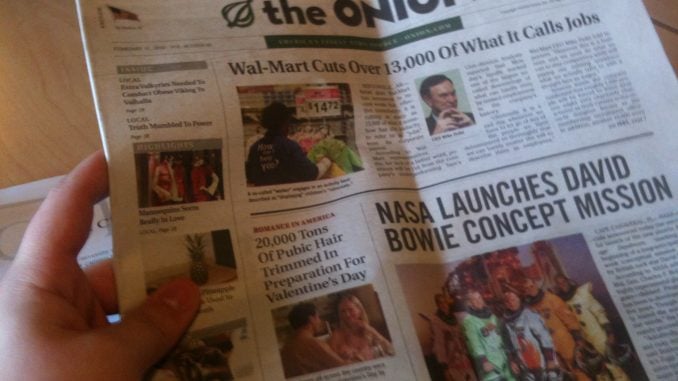
“Study: 90 Percent of Americans Strongly Opposed to Each Other.” That’s the headline on a story in what, on some days, seems to be America’s most reliable news outlet, The Onion.
We laugh (or at least I did) because it strikes a chord. Americans of many different political outlooks today seem united in believing that we are experiencing the worst times in the nation’s history. President Donald Trump’s detractors talk about how he’s a neurotic neo-Nazi establishing a dictatorship. Trump’s fans talk about the existence of a deep state that uses secret protocols to undermine voters’ choices.
Both sides have some cause for complaint. But their claims are overheated. Anyone familiar with the long course of American history — perhaps a smaller category than in times past — knows that, whatever our problems, things have been worse, far worse, before.
Many of us look back to a time when Americans shared a consensus on cultural values and when we are told that high school graduates or even dropouts could easily snag well-paying blue-collar jobs. That’s a reasonably accurate description of America in the 1950s on cultural values and of parts of America — the unionized industrial areas — on those jobs.
Trump’s unspecific slogan, “Make America Great Again,” probably strikes most listeners as a promise to restore the seemingly culturally unified America of the two decades after World War II. Democrats’ calls for strengthening labor unions and job protections evoke the 1950s, the time of peak union membership.
But this was a short period — I call it the Mid-century Moment — and the exception rather than the rule in American history.
That tends to get overlooked by those lamenting polls showing low confidence in institutions. The benchmarks against which they are measured are inevitably when pollsters first asked those questions in the 1950s.
But that was a time when big institutions — big government, big corporations, big unions — had just finished leading Americans to victory in a world war and to unanticipated prosperity in the years that followed. They had arguably earned the confidence they enjoyed.
If you had been able to ask Americans those questions in the years before George Gallup conducted his first poll in 1935, it’s likely that they would often have expressed low confidence, as they did starting in the late 1960s.
The years of rapid industrialization and high immigration and farmer rebellion, the period after World War I, the Great Depression — all of which brought lots of discord and disillusion — would have made for negative marks. Not to mention the arguments over slavery that led to the Civil War — or the bitter Adams-Jefferson debates. Talk about 90 percent of Americans being opposed to each other!
Against these events, today’s woes seem less fearsome. We are told that Russian internet trolling is the worst foreign attack since 9/11. But it’s nothing like what we faced with the Soviet-controlled Communist Party, which, with many well-placed advocates, opposed Franklin Roosevelt in 1940 (during the Hitler-Stalin pact), supported him in 1944 (when the Soviets were U.S. allies) and opposed Harry Truman in 1948. Anti-Communist liberals — such as Eleanor Roosevelt, Hubert Humphrey and Arthur Schlesinger — as well as conservatives, weighed in against this genuinely dangerous foreign interference.
What about the peculiarities of Donald Trump? I can remember other presidents who, despite impressive credentials, behaved very oddly, to say the least. Lyndon Johnson and Richard Nixon, for example, smart men with 30 and 20 years of high-level experience, respectively. And don’t forget Franklin Pierce and James Buchanan, whose misbegotten policies and ineptness led to civil war.
Then there’s the notion that the almost universally unexpected result of the 2016 presidential election represents a giant popular upheaval. Not so much, when you look at the numbers. Trump got 46 percent of the vote, 1 point less than Mitt Romney did in 2012, and Hillary Clinton got 48 percent, the same as John Kerry in 2004.
What did happen is that Trump, in effect, traded off votes from some highly educated whites in return for about the same number from non-college-educated whites, in a way that netted him 100 extra electoral votes. Russian trolls had no more to do with that than a bunch of kids sporting MAGA hats at a rally.
It would be nice to get some aspects of the Midcentury Moment back (more two-parent families), but no one wants some others (racial segregation laws). In the meantime, read Steven Pinker’s “Enlightenment Now,” on human progress in reducing violence, improving health and increasing prosperity. Many important things are getting better.
And remember that The Onion is parody.
Michael Barone is a senior political analyst for the Washington Examiner, resident fellow at the American Enterprise Institute and longtime co-author of The Almanac of American Politics.



